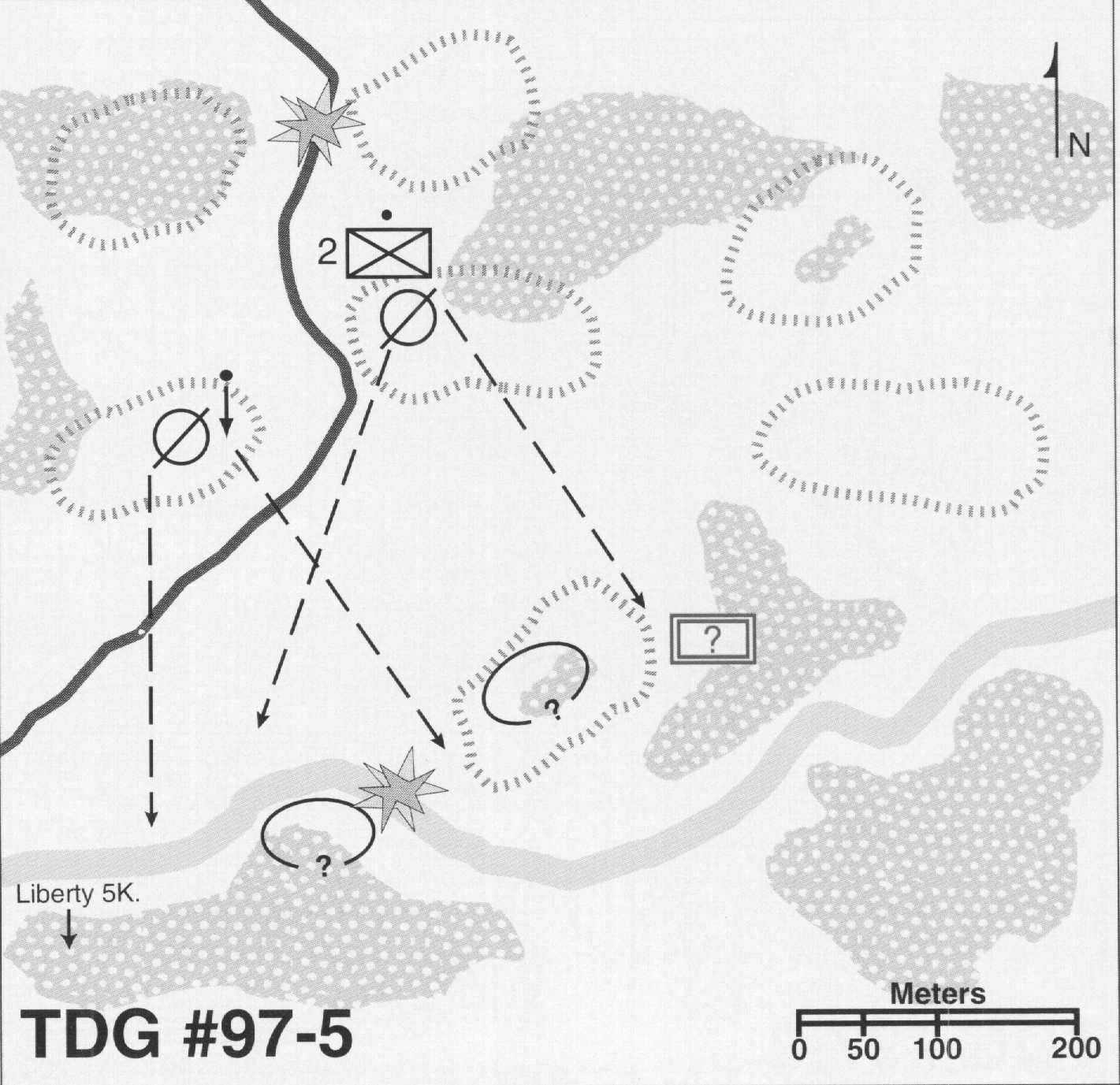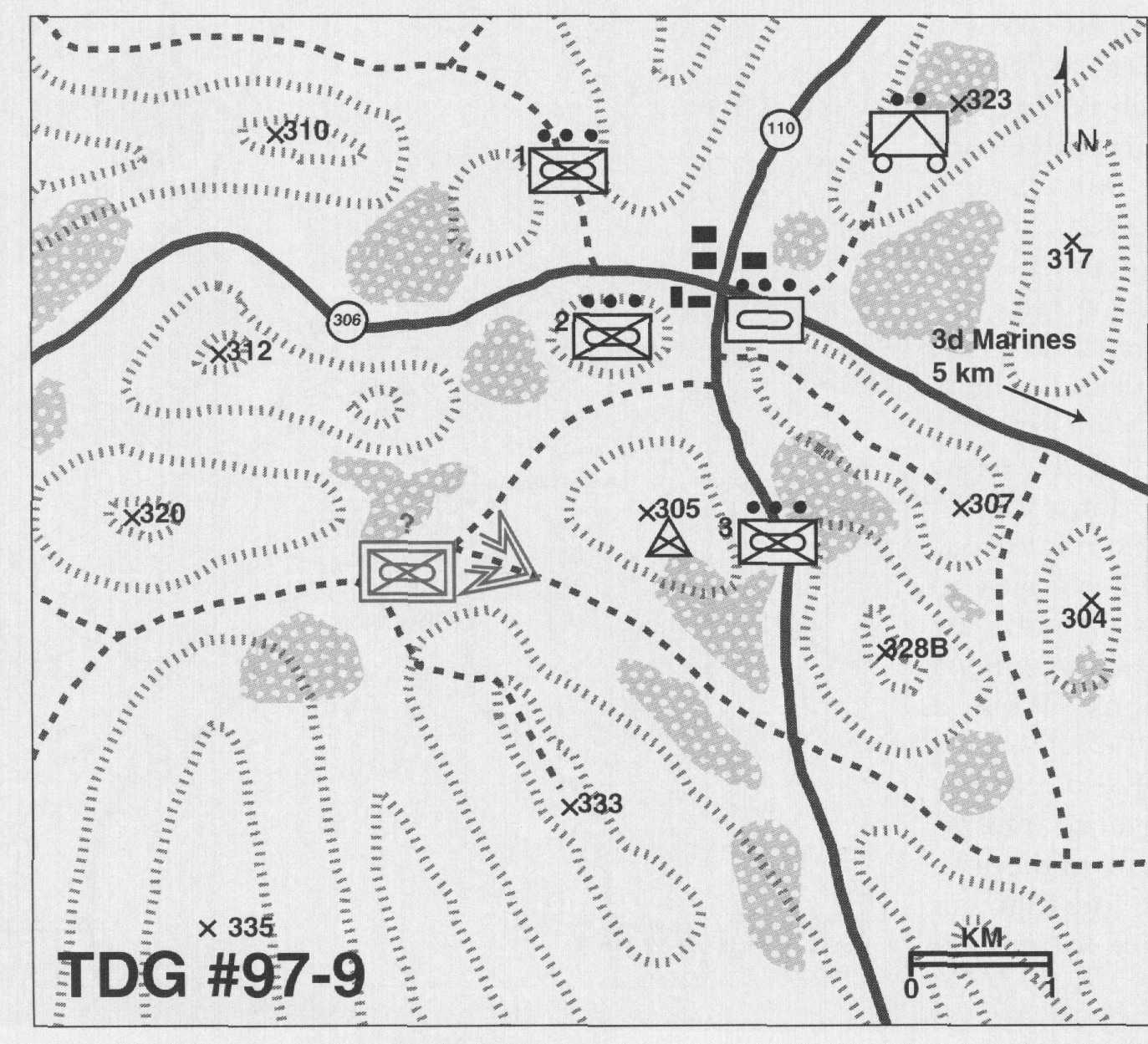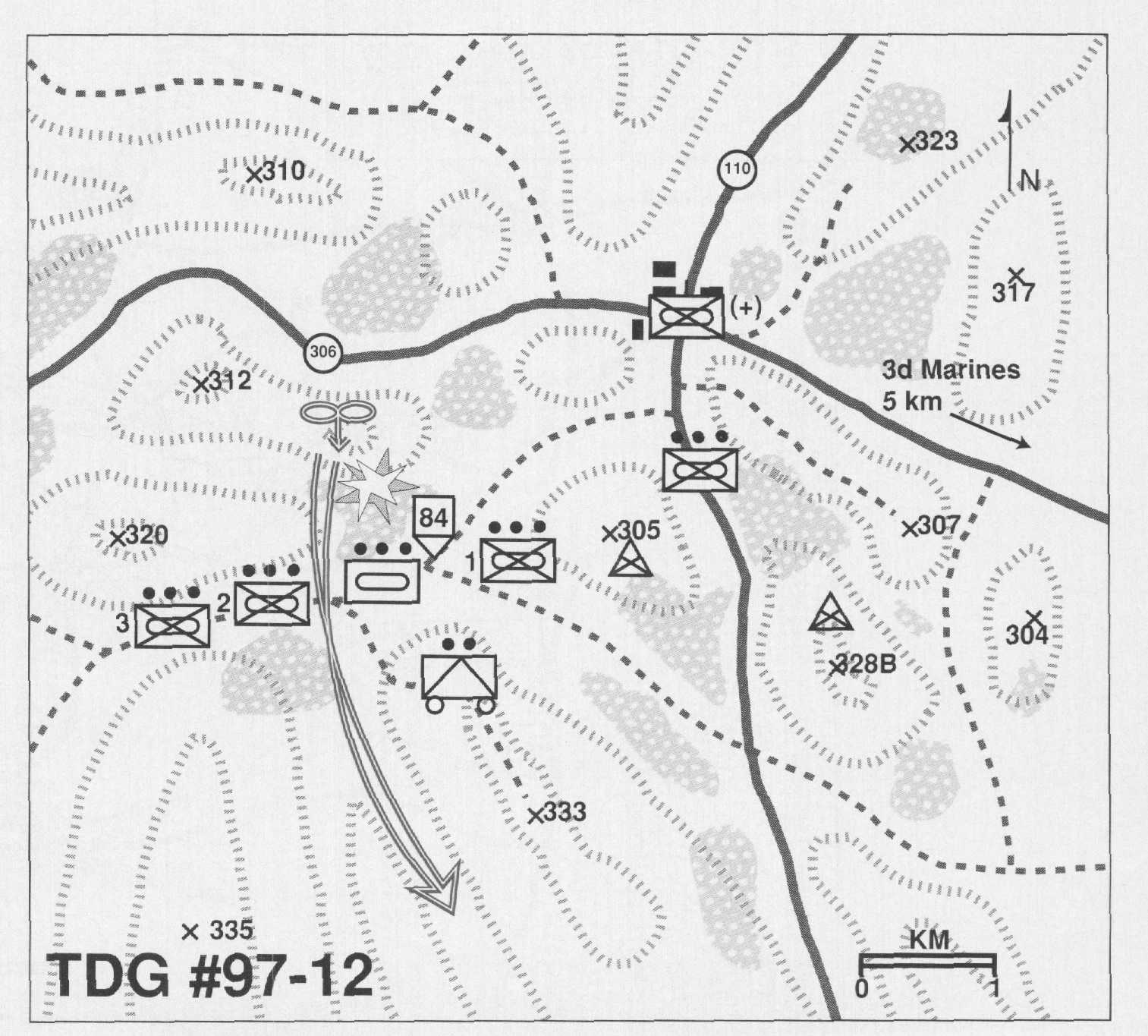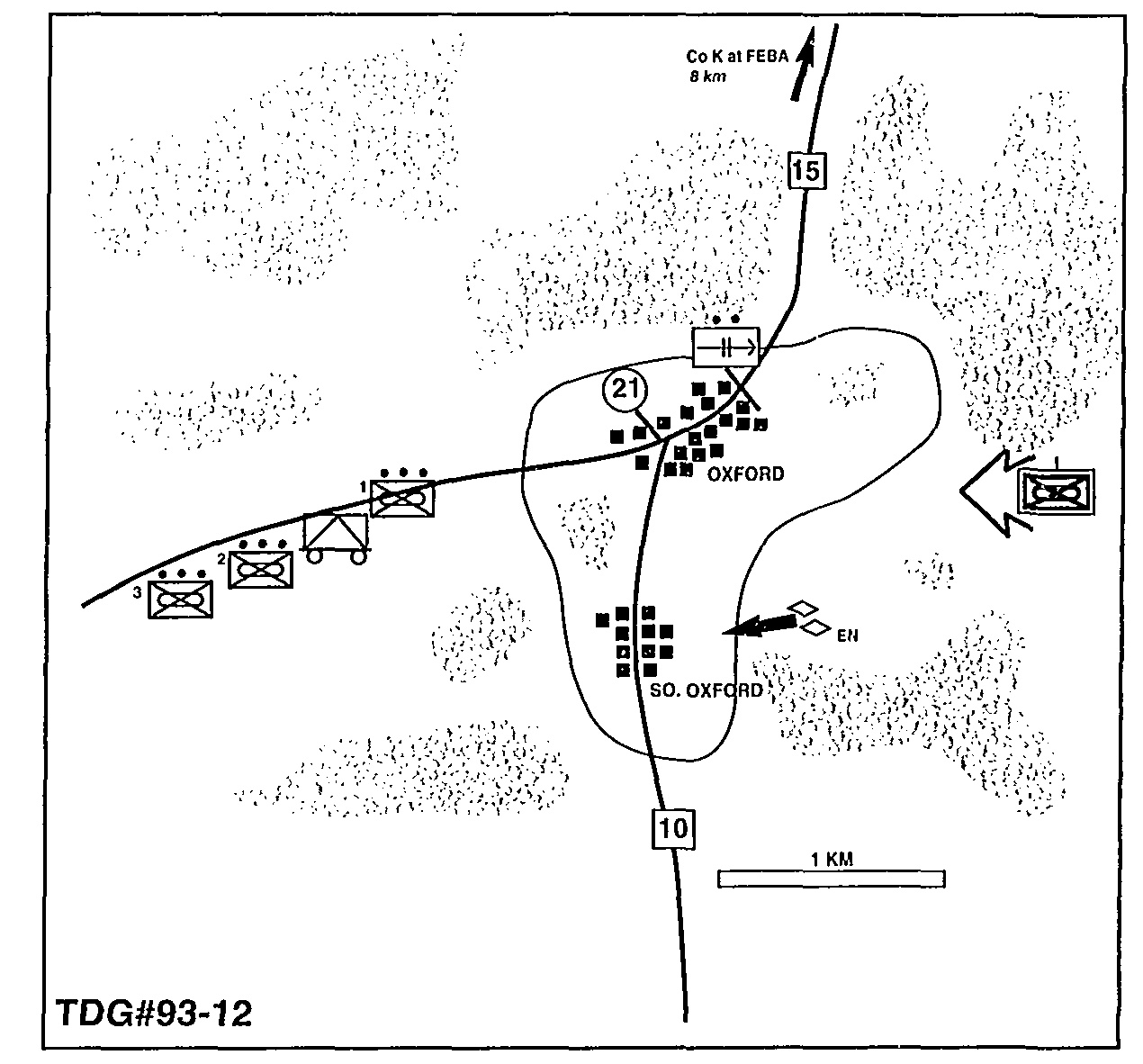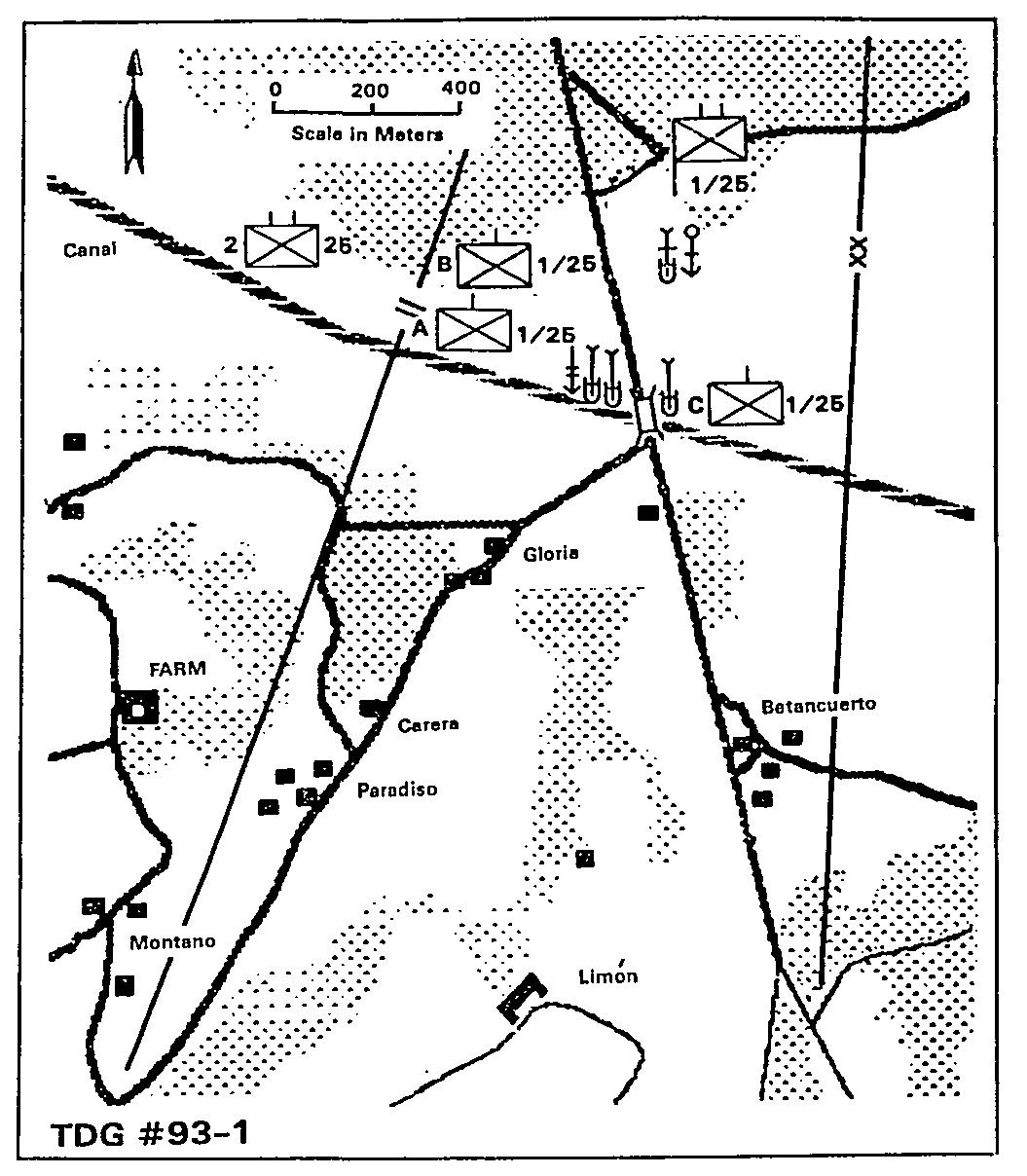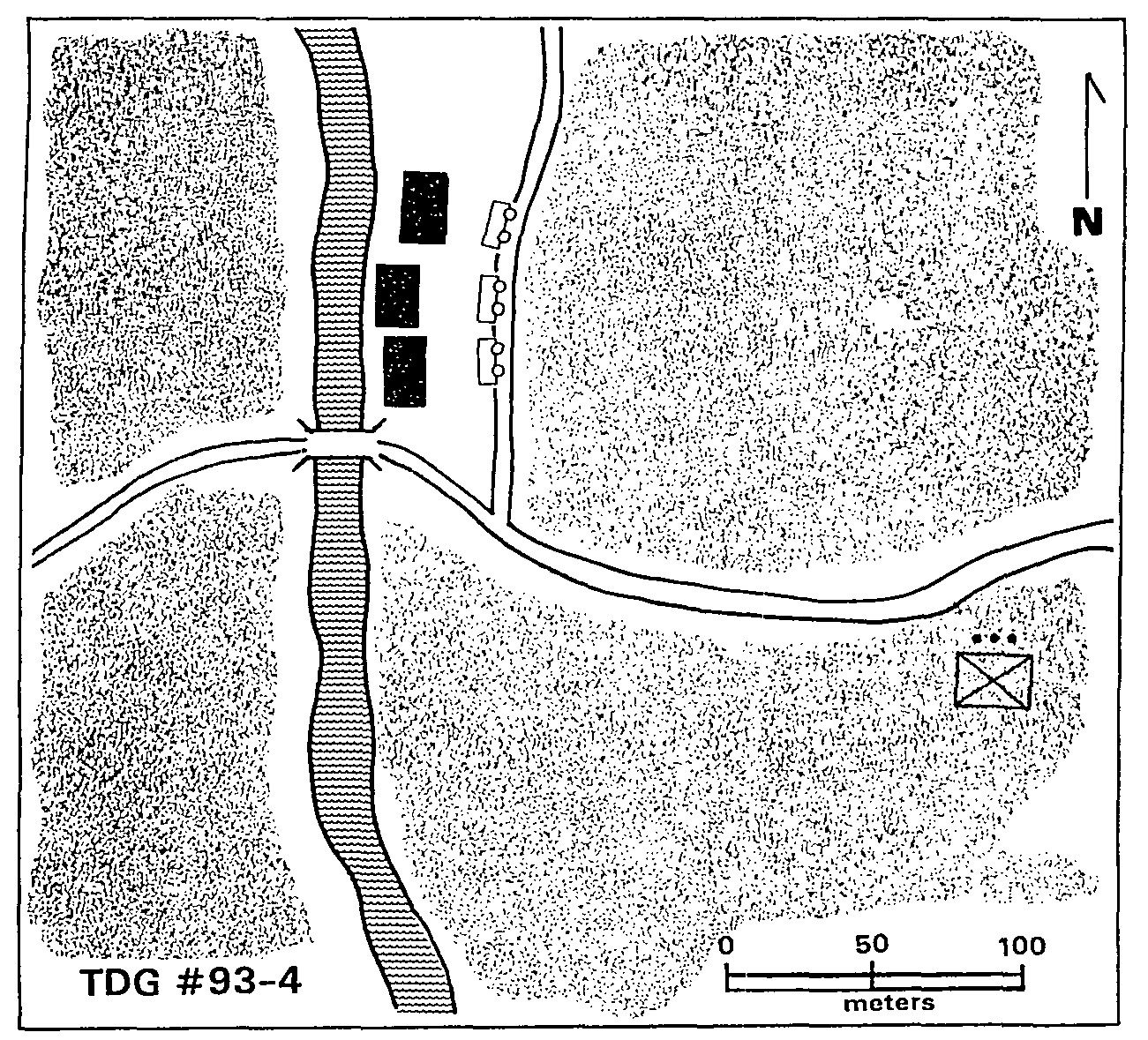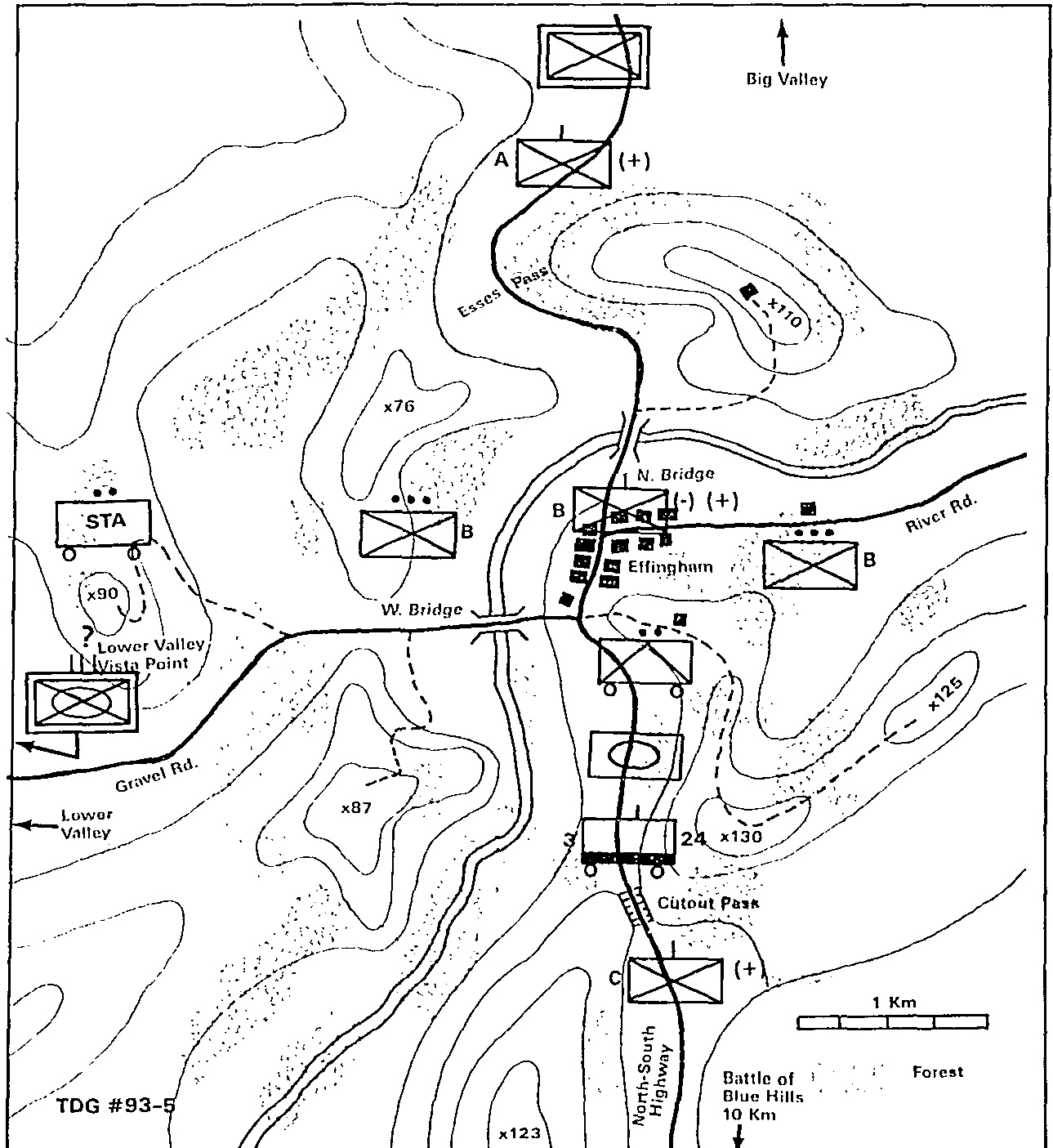This TDG should look familiar. Its scenario is essentially the same as the one encountered in TDG #97-1 for which three solutions are given on the preceding pages. There is one major difference however-this time you are the enemy. How does having read pages 83-85-having looked at three alternate ways your opponent might see the situationinfluence your decision? Does it help you to have “worn your opponent’s shoes” for a few minutes? Is “wearing his shoes” part of what is meant by orienting on the enemy?
Situation
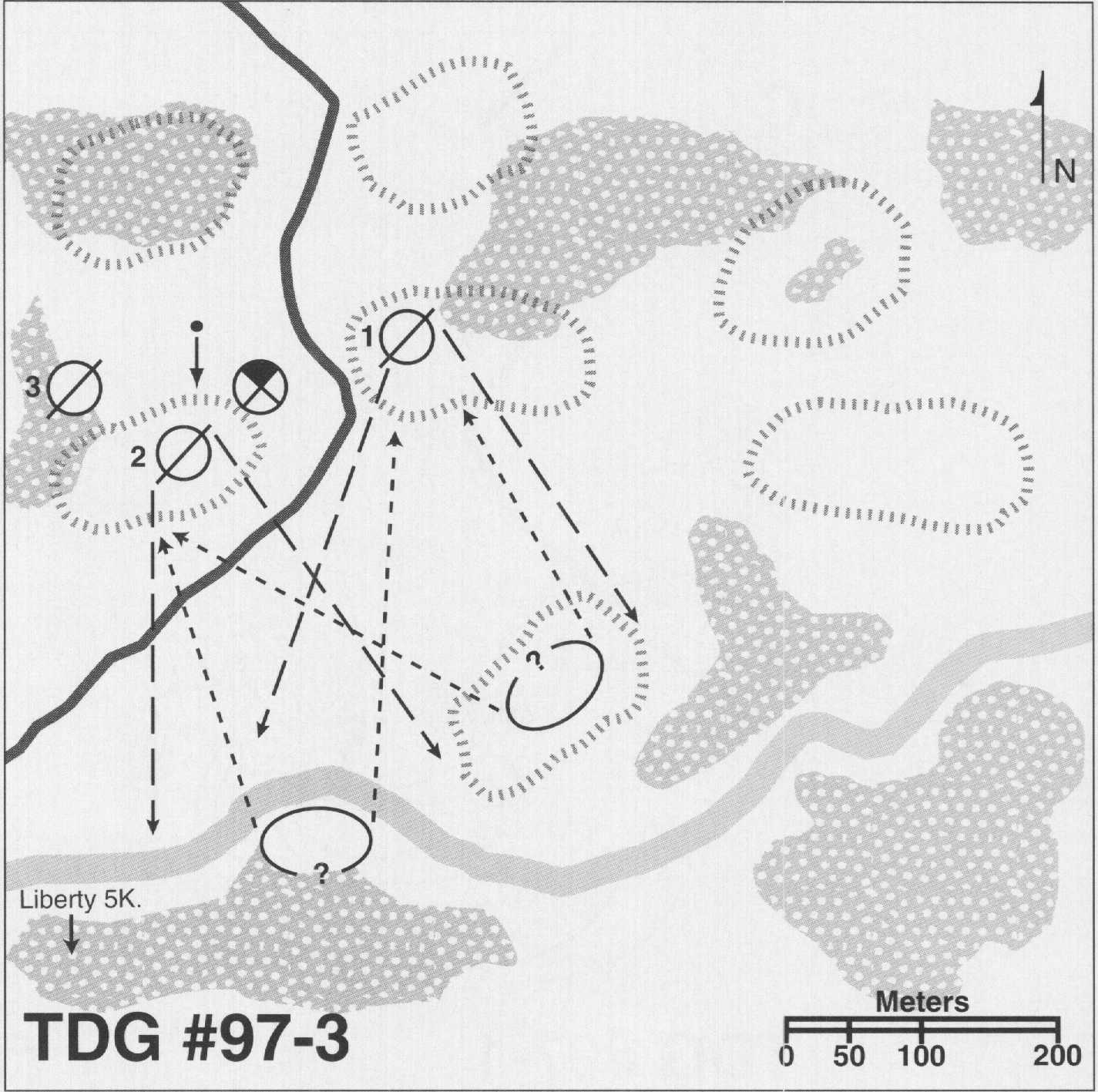 You are a squad leader in Company K, 3d Battalion, 4th Marines. The company is making a movement to contact, moving south toward Liberty. The company’s mission is to locate and destroy any sizable enemy forces en route. The company commander has made it clear that the march objective is merely a reference point for the direction of movement; the true objective is the enemy. You are fighting an aggressive infantry force that when assembled usually either pushes rapidly ahead to bypass your positions or calls in supporting fires and attacks them.
You are a squad leader in Company K, 3d Battalion, 4th Marines. The company is making a movement to contact, moving south toward Liberty. The company’s mission is to locate and destroy any sizable enemy forces en route. The company commander has made it clear that the march objective is merely a reference point for the direction of movement; the true objective is the enemy. You are fighting an aggressive infantry force that when assembled usually either pushes rapidly ahead to bypass your positions or calls in supporting fires and attacks them.
Your platoon is the advance guard, and your squad has the point. Your lieutenant has given you the following instructions:
I’m relying on you to develop the situation to the best of your ability whenever you make contact. If you can overpower the enemy yourself, fine. If it’s a sizable enemy force, my intent is for you to develop the situation advantageously for the rest of the company. Try to maneuver to fix the enemy so they can’t escape and so the CO can bring the rest of the company to bear. I’ll support you with the other two squads.
Your squad is in a wedge formation with 1st Fire Team on the left, 2d Fire Team in the center leading, and 3d Fire Team on the right. An attached machinegun squad is located with you behind 2d Fire Team. The platoon commander is about 200 meters behind you, and the rest of the platoon is about 300-400 meters back.
Your squad is moving through an area known as The Mounds, generally following a road that winds its way toward Liberty. The terrain is unusual and you have Marines on both sides of the road alert for possible contact. As 2d Fire Team crests one of the mounds, you see the Marines drop quickly to the prone position and begin firing. You crawl forward to the crest and can see an enemy force firing from a stream bed about 300 meters south. Another position soon opens up from a mound to the left front. You estimate the total enemy strength so far at about platoon strength. You notice that 1st Fire Team has also taken up firing positions on a mound to your left. 3d Fire Team and the machineguns are in defilade to your right rear. Supporting arms begins exploding on the road about 200 meters to your rear. What do you do, Sergeant?
Requirement
In a time limit of 2 minutes, issue any orders you would give. Once this is done, describe any additional action you would take and provide a sketch of your plan and an explanation of your decision.


